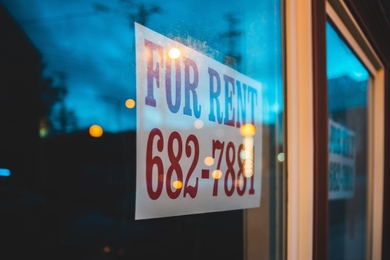Rental Property Insurance Coverage: Do I Need It? | Gabi

Table of Contents:
What Rental Property Insurance Covers
What Are the Different Types of Rental Property Insurance?
Special Additions for Rental Property Insurance
The Differences Between Homeowners Insurance and Rental Property Insurance
Average Cost of Rental Property Insurance
Rental Property Insurance FAQs
Find Your Rental Property Insurance With Gabi
Getting into the investment property business can be exciting. That could mean you’re renting a spare bedroom as a short-term rental a couple of times a year, or it could mean purchasing a multi-unit property for long-term renting.
Regardless of how often you have renters, your insurance needs change when you begin running a rental property. You may be wondering “Do I need rental property insurance if I have home insurance?” Specifically, you are taking on new kinds of risk that aren’t covered by homeowners insurance. Luckily, rental property insurance provides a variety of useful coverages that help you mitigate those risks as well.
What Does Rental Property Insurance Cover?
Insurance for rental property, whether it is a condo rental insurance policy or a single-family home rental property insurance policy, covers some familiar ground: liability coverage for any medical expenses from injuries occurring in the rental property, dwelling coverage in the case of perils that could cause property damage, and coverage for your own personal belongings that are stored on the premises.
The insurance that rental property owners need also often includes loss of rental income coverage as well as other, specific add-ons known as endorsements. Insurance on a rental property may also be called landlord coverage or a landlord insurance policy.
What Are the Different Types of Rental Property Insurance?
Most forms of rental property insurance fall under one of three types, known as a Dwelling Policy 1, 2, or 3. These policies offer different types and levels of coverage, particularly when it relates to the kinds of disasters and perils that could trigger a claim, but each can provide unique benefits for a property owner.
DP-1 is the most basic of rental property insurance coverage. The perils that make a claim possible will usually be named in the policy, so anything else is unlikely to be covered. You’re most likely only able to claim the actual cash value (ACV) of any losses, not the replacement value, the latter of which pays out at a higher rate in most cases.
DP-2 tends to cover more circumstances and perils than the DP-1 policies, and will offer a higher payout. Payment is calculated based on replacement costs instead of ACV. For example, if your claim included a refrigerator that was damaged beyond repair in a natural disaster, a DP-1 policy is more likely to pay out the cash value of that fridge. This leaves you to make up the difference if the fridge was old and a new one costs much more. A DP-2 policy would calculate what it should cost to replace the fridge, resulting in a higher payout.
DP-3 coverage will have the most expensive premiums of the three types, but it will cover the most perils and have the most robust coverage at the replacement cost level.
Choosing between these options is really a matter of weighing the relative risks of the perils involved, your own ability to pay yourself if a non-covered peril occurs, and how much you’d prefer to save on the insurance premium versus gaining peace of mind about potential claims.
Special Additions for Rental Property Insurance
Depending on the insurance provider or insurance company you choose to work with, you may have access to additional coverage in your standard policy. You also may be able to request additional coverage or receive special discounts on your insurance for rental property. Here are some of the available coverages:
Inflation protection:
- Coverage that helps you automatically adjust your limits annually so that you’ll always have coverage for the value you initially wanted to cover.
Burglary or vandalism coverage:
- Some policies don’t automatically cover these two particular perils, so this additional coverage ensures you can make a claim if they occur.
Tenant move-back expenses:
- If your renter has left because you are in the process of repairing something after a claim, this coverage pays for the renter to move back in.
Ordinance and law coverage:
- If a municipal code or law creates additional costs during repairs for an insured project, this covers the cost of meeting those local laws.
The Differences Between Homeowners Insurance and Rental Property Insurance
Homeowners insurance and rental property insurance coverage can vary in several ways, but there are two main differences to be aware of.
First, loss of rent coverage won’t be included in your homeowners policy — only a rental property insurance policy covers that. Rental property insurance can reimburse you for the rent you lose if a peril makes it impossible for renters to live there for a period of time. It comes with stipulations about how long you can receive this coverage, and not every policy will have it.
Second, it’s key to remind renters that your policy doesn’t extend to the renters’ personal possessions. Even if a named peril is covered under your policy and your own possessions, like appliances in the rental, qualify for a claim, your renters must have their own renters insurance policy in order to make a claim. They can see what is covered by finding renters insurance quotes. This division of risk is one reason that many landlords strongly encourage renters insurance when they lease to a new tenant.
Average Cost of Rental Property Insurance
While the price can vary, many rental property insurance policies cost 15-25% more than a homeowners policy for a similar property. The Insurance Information Institute reported the average cost for homeowners insurance in 2018 was $1,249. With this number in mind, rental property insurance is likely to cost between $1,436 and $1,561 on average. Location, extra coverages, and the value of your property are all likely to impact how much you’ll pay.
Rental Property Insurance FAQs
How much does it cost to insure a rental property?
Costs vary, but for the average rental property in the United States, rental insurance may cost between $1,436 and $1,561 based on data from the Insurance Information Institute.
What insurance do I need for a rental property?
Most rental property owners want liability coverage in case someone is injured and dwelling coverage in case there is damage to the structure. You’ll also benefit from loss of rent coverage and personal property coverage for your personal possessions stored on-site.
How much is investment property insurance?
Investment property insurance costs vary by insurer, the deductibles you choose, and many other factors. They tend to be slightly higher than a homeowners policy for the same physical structure.
Do I need both homeowners insurance and landlord insurance?
If you own a home that is your primary dwelling and a separate property for rental, you’ll want both policies. If you rent a room in your primary residence from time to time, you may have coverages within your homeowners insurance policy that make it unnecessary to purchase a landlord insurance policy. Check with your agent and ask what the implications of renting a room are for your potential liability.
Find Your Rental Property Insurance With Gabi
The easy-to-use Gabi quote interface allows you to get started finding all the insurance policies you need, including rental property insurance. Bundling your landlord insurance with other coverages, like auto or homeowners insurance for your primary dwelling, can save you money while giving you all the protection you need. Sign up today to see how much more you could be getting for less with Gabi.









